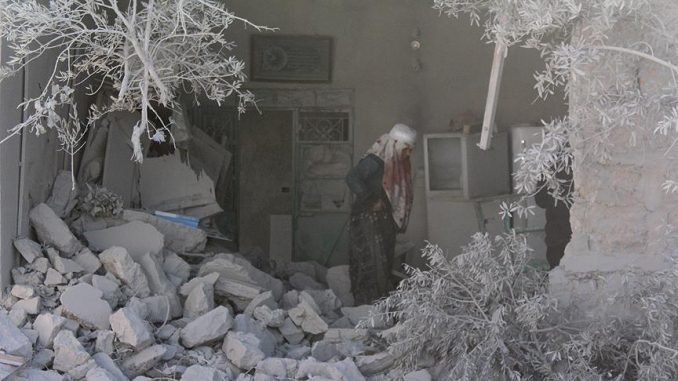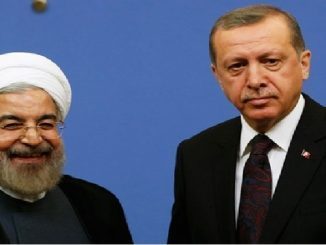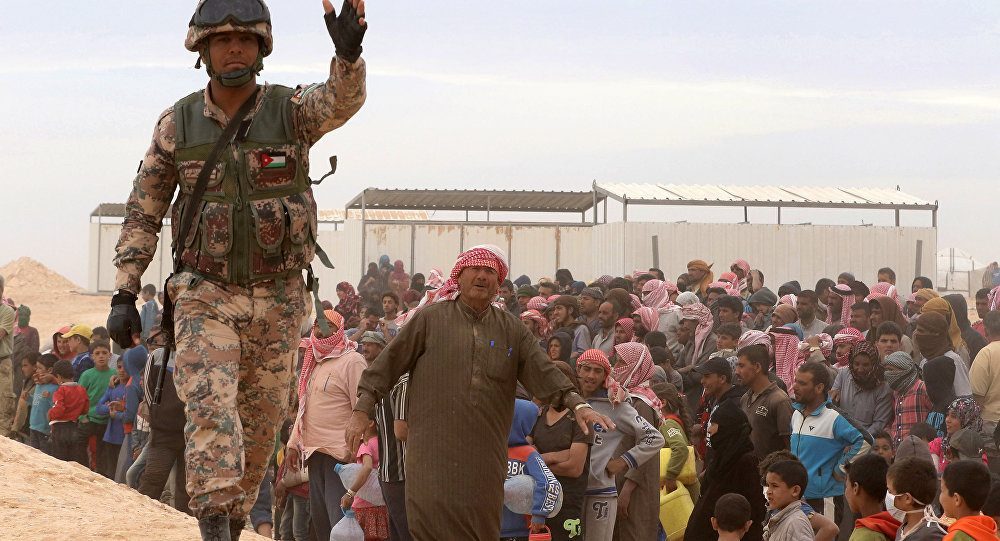
Several thousand residents of rebel-held eastern Aleppo fled their homes escaping extreme bombardment, after a rapid advance by the Assad regime forces who took over six rebel-held areas and became close to splitting eastern Aleppo in two.
There are about 275,000 people trapped by the siege of eastern Aleppo, where civilians are suffering through daily bombing, including by bunker-buster and incendiary weapons, and through starvation, as limited supplies run out and aid convoys are blocked from the city.
Assad regime forces started a major offensive to push opposition fighters out of the besieged eastern half of the city on 15 September.
Helicopters continue extensively dropping barrel bombs in conjunction with airstrikes by warplanes on areas in the eastern neighborhoods of the city, accompanied by artillery shelling by the regime forces in the same places.
The regime’s forces’ persistent and the intensive airstrikes forced the rebels to leave the areas they hold.
Assad regime said on 19 November that its forces captured the Dahiyet al-Assad district of western Aleppo , reversing all the gains made by rebels two weeks into their counter-attack against government-held areas.
Last week the army also captured the 1070 Apartments district and nearby hills in southwest Aleppo, a focal point of fighting for months and important because of its position alongside a corridor used by the government into the western zone.
Assad regime forces retook almost a third of the Masaken Hanano district, which has been held by the rebels for the past 4 years, on 22 November according to the observatory.
Masaken Hanano was the first Aleppo district to fall to rebels in 2012, and it is strategically vital.
On Saturday 26 November, Assad regime forces said in a statement they had, alongside their allies, taken full control over the Hanano housing district.
On Sunday, the 13th day of the operation, they also took control of the adjacent neighbourhoods of Jabal Badra and Baadeeen and captured three others, the Syrian Observatory for Human Rights said.
Inzarat, Al-Sakan al-Shaabi and Ain al-Tall have all returned to regime hands and government forces have made large forays into Sakhur and nearby Haidariya, the monitor said.
It said government forces are “in control of most of the northern part” of Aleppo.
Syrian Army make rapid advances in #Aleppo.Captured Jabal Badro,part Sakhur district,Bostan Basha,Hellok,Inzarat &Haidariya Youth Housing pic.twitter.com/6NvI5MAUHY
— Military Advisor (@miladvisor) November 27, 2016
The next image shows the areas regime took over on Saturday, to compare how its forces advanced in one day.
Battle of #Aleppo 26/11/16.
Syrian Army fully captures #Hanano district.
HD:https://t.co/wanY7MmDxT pic.twitter.com/sYysQtG6My— Military Advisor (@miladvisor) November 26, 2016
Splitting the rebel-held areas in two
“The rebels have lost at least 30 percent of the territory they once controlled in Aleppo,” Observatory chief Rami Abdel Rahman said.
The regime gains came as its aircraft pounded rebel positions and amid heavy clashes between the opposition and forces loyal to President Bashar al-Assad in the strategic Sakhur district.
Sakhur lies on a stretch of just 1.5 kilometers (less than a mile) between west Aleppo and Masaken Hanano, now both regime-controlled.
If the regime takes control of Sakhur, east Aleppo would be split in two from north to south, dealing a further blow to the armed opposition.
“Every day there are a lot of attacks, helicopters dropping barrel bombs and war planes dropping bunker-buster bombs and cluster munitions,” Modar Shekho, an emergency nurse in al-Shaar neighborhood, told Al Jazeera.
“The revolutionaries are fighting fiercely but the volume of bombardments and the intensity of the battles, the dead and the wounded, and the lack of hospitals, are all playing a role in the collapse of these frontlines,” said an official from Jabha Shamiya, one of the biggest groups fighting against Assad in northern Syria. Some of its members are fighting in Hanano.
He condemned the “international silence” and said the government and its allies were trying to exploit the period before the next U.S. administration took over.
“The Iranians, Russians and regime know there is a vacuum and they are trying to exploit it using all means,” he said. “We are in touch with the friendly states but unfortunately Aleppo is being left to be slaughtered.”
Thousands flee their houses
Thousands of civilians left their homes fleeing the extreme bombardment and the clashes in the eastern parts of Aleppo.
State media said at least 1,500 people in rebel-held areas had fled to state-controlled territory in the biggest exodus since months of heavy bombing on rebel-held areas where few civilians had left despite several corridors the army said it opened to for them and rebels who wanted to surrender.
The army had blamed rebels for holding back civilians from leaving east Aleppo, saying they were using them as human shields.
“Thousands have fled the Hanano neighborhood and other areas near the front lines towards the central parts,” a journalist said.
“But the air strikes in the last 13 days have relentlessly targetted anything that moves, be it ambulances or rescue workers. Hospitals have been destroyed and people have very little food and medicine,” he added.
“We left Hanano because of the bombardment from the Syrian army during their advance, and the chlorine gas,” Muhammad, who declined to use his full name out of fear for his safety, told Reuters.
He was waiting with his wife, mother and three children at a minibus stop, hoping to travel on to government-held west Aleppo. He said Hanano had contained about 200-300 families, but they had come and gone throughout the war depending on the intensity of strikes.
In the 13 days since the renewed bombardment on east Aleppo, at least 211 civilians, including 27 children, have died in the besieged sector, the Observatory said.
However, the civil defence said that the deaths number exceeded 500 civilians, while more than 1700 were injured.
The coming days will decide the future of the conflict in Syria, as defeating the rebels and retrieving Aleppo means destroying the last major resistance stronghold of the Syrian rebels and will lead eventually to the victory of Assad regime and ending the Syrian revolution.
Tonight we have no house, it's bombed & I got in rubble. I saw deaths and I almost died. – Bana #Aleppo pic.twitter.com/arGYZaZqjg
— Bana Alabed (@AlabedBana) November 27, 2016
42 killed & 200+ injured in #Aleppo & countryside yesterday. Many more still under rubble as regime advanced in some areas.#StandWithAleppo pic.twitter.com/dxeYoNiuZH
— The White Helmets (@SyriaCivilDef) November 28, 2016
In 12 days, 500+ civlians were killed,1500+ injured & 4 hospitals & 2 SCD cntrs destroyd in #Aleppohttps://t.co/x7w9cYmrgL#StandWithAleppo pic.twitter.com/y8STa0mUrm
— The White Helmets (@SyriaCivilDef) November 27, 2016



